There’s a fine line between being a conservationist and being a zealot. That’s why both of my kids will be getting a refresher course in the coming days on how to properly dispatch, clean and gut a wild trout. Over my dead body will they succumb to zealotry.
Now, it won’t be a native trout, mind you. But they will each clean a wild fish, hatched and reared in the water from which they will yank it. Hell, it’s going to take more than one trout, too—not only will I demonstrate how to slide the knife into the vent and slice up the belly to the gills, but I’ll ensure both of my children demonstrate their adeptness at keeping a fish for the frying pan. They may have to practice more than once, and I’m totally fine with that.
In some insulated circles in this country, the mere promotion of killing and cleaning trout—any trout, apparently—“sends the wrong message.” God forbid we show people how it’s done. That might be considered “dangerous,” or so I was told during a recent email exchange with someone of the zealot ilk.
Hogwash.
The day our kids lose the ability to kill, gut and clean a fish caught in the wild is the day we can kiss our fishing goodbye. When fishing becomes purely recreational, and no lessons about life and death are taught or learned, and no nutritional value is gleaned from the fish we cherish and the waters we love, we will have a hell of a tough time defending our desire to simply “play with our food” and then let it swim away.
More Like This
Keep in mind that this comes from a true believer in the value of catch-and-release angling, as both a conservation tool, and in most cases, the right thing to do by our fellow anglers. But, as I’ve said before, some fish need to die to accomplish the restoration of native fish in the waters where they belong. And if non-native fish need to die, we (and the anglers who come after us) need to know how to properly clean and prepare these fish for a meal.
Suggesting that teaching the fine art of fish cleaning sets a bad precedent is where the real danger lies. It makes things absolute. Black and white. No room for compromise, common sense or the application of that common sense to a conservation challenge. How would you rather see non-native fish culled from a trout stream where they don’t belong? By anglers keeping as many as they can reasonably clean and eat? Or by the application of rotenone that essentially nukes all aquatic life in a stretch of river or stream (not to discount rotenone as a very effective tool in the effort to restore native trout to their home waters where it’s appropriate)?
I’ll take the former.
My grandfather taught me to quickly kill and clean trout we intended to keep. I kept a lot more trout when I was a kid than I do now, and that’s largely because, in the high country of Colorado in the 1970s, non-native trout were part of the Rocky Mountain largesse.
But even then, my grandfather knew which flavor he preferred. Back then, cutthroat trout were simply called “natives.” They were released. Always. Non-native brook trout? They were almost always destined for the frying pan—after they were killed, cleaned and gutted, of course. I’m almost certain my grandfather didn’t release cutthroats because they swam in the waters where they belonged. They were just special fish. And, even then, they were becoming rarer and rarer, thanks to the encroaching brook trout (and, I suppose, rainbows and browns, too).
“They taste better, anyway,” he said of brookies. And after sampling everything from rainbow and brown trout to Arctic grayling, I agree—the invasive little char that have overtaken so many native trout streams in the Rockies do, indeed, taste better. Rolled in salt, pepper and corn meal, and fried in melted butter, there may not be a better meal to be had over a camp stove. I suspect that a exotic rainbow trout caught in an Appalachian trout stream where brookies are native tastes pretty damned good, too.
I remember watching my grandfather clean trout streamside. I remember, too, when he handed me his knife and the next fish on the willow branch and told me to try it. I clumsily slid the knife into the fish’s vent, and immediately pushed it too deep into its gut cavity, penetrating the flesh. His huge hands guided my small ones, and I remember just how sharp he kept his “fishing knives.” The blade slid quickly up the fish’s pale belly, all the way to its gills.
“Now,” he said, “Run your thumb backwards up the spine and push all the guts out.”
Fascinated by the viscera, I pushed it forward until it erupted out of the fish near its neck.
“Now rinse it off,” he said. I plunged the fish’s carcass into the freezing cold water. “Do it again. You have to get everything.”
This process is necessary. Hell, it’s sacred. And, when done in the right place to the right fish, it’s a good thing for fisheries conservation, and a good thing for anglers.
At its heart, fishing is a consumptive sport, even though many of us today rarely actually “consume” fish. But for the sake of its future, we ought to be teaching the next generation of trout anglers how to consume fish responsibly—it’s part of the conservation compact and the effort to restore our native trout.
And that starts with killing, gutting and cleaning fish. The real danger lies in letting this process become a lost art, for then we risk letting the foundation of the craft we love crumble and collapse.




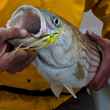






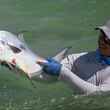
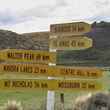




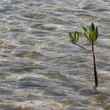



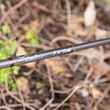
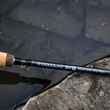




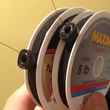





Comments
Paul replied on Permalink
I think the author is confused between being a "conservationist" and just another C&R guy. I know some guys that C&R fish and think that anyone killing "their" fish is a travisty. They think that C& R is a panacea. Nothing could be further from the truth! Remember the 3Rs Reduce,Reuse ,Recycle. Some people think if they recycle they are environmentalist. They forget the other two Rs! Some C&R guys could give two shakes as to protecting fishery habitat. A true CONSERVATIONIST can and will harvest fish from a sustainable population. But doesn't look the other way when the sidewalk population wants to degrade or wreck our nations fisheries for the almighty dollar. A CONSERVATIONIST stands up for our natural resources. Big difference.
Ronko replied on Permalink
I've had a lifetime love affair with brookies. Big or small they are my favorite fish of all. Always eager to take a dry, a nymph, a wet, or a streamer. In clean cold waters or warmer, not so great waters brookies don't care. A fish who's colors make every other fish pale in comparison. Love the brookies man, don't be a hater! You'd think there'd be a little more love for a fish who has started a lifetime fishing love affair for so many people. I just don't get the brookie disdain by so many people....
Scott Jerome replied on Permalink
Love it, right to the point. As a fly fishing fool I used to keep more than I do now. Here in Michigan the AuSauble is my go to. Now my childern know it we'll. By God's grace I am buying a piece of south branch heaven for my childern,there childern,and as many people I can get into the sport as my grandfather,father and other mentors have done for me. I is by far in my opinion the most prestige in connection with the fish fishing there is. We will be selective on fish we keep but we will keep some "yummm". As you say my children also will know how to provide for them self and know what a valuable renewable tasty resources we are blessed with. Thanks for your article loved it.
Rachel replied on Permalink
I agree wholeheartedly! Great article.
Gregory A Johnson replied on Permalink
In Georgia most trout can't survive the hot summer. When the heat turns up I often keep my limit.
Jess replied on Permalink
Hi Chris,
By your logic on native species, shouldn't any human whose DNA evolved in Europe, or elsewhere outside the United States, leave the country since they do not belong here, which will allow for Native Americans of the given region to repopulate and thrive in the area? Otherwise, why would non-native trout be invasive and worthy of murder, yet non-native humans have the freedom to stay?
Anonymous replied on Permalink
Oh the outrage! This article is pretty baity to those who are easily triggered.
Rich replied on Permalink
Well said! The basic idea of conservation... Take some and leave the rest behind for a future sustainable use. It could guide our consumption of most everything: game animals, fish, trees and even water. Fish is a big part of the menu at our house: trout, perch, bass, walleye and pike. Just a side note; when gutting a trout, start at the vent and go up to the point below the gills. Then take your knife and cut across below the jaws in the two spots where the red slashes would on a cutthroat(we don't eat them either) grab the tongue of the trout with your thumb hold on to the jaw with your other thumb and pull downward and the guts all come out in one piece. Then use your thumb to remove the blood along the backbone.
Maryellen Lewis replied on Permalink
I have two very mundane questions.
(1) If you keep your fish in the water on a stringer (the kind that grabs the lower jaw), can you still safely release them when you catch a few more pan-sized fish for dinner? Or does this just doom the fish?
(2) Where I live, most/all the waters contain various amounts of contaminants - that is, it is not potable without filtering or boiling. So can I still clean & wash my kept fish with the available water, as long as I rinse them when I get home? Will the fry pan kill any remaining hitchhikers?
Thanks.
Glenn Dotter replied on Permalink
As with the other writers here, I keep far fewer trout than when I was young 50 to 60 years ago. But the original reason for fishing and hunting was survival and putting food on the table. Teaching that will help insure your children's ability to survive. I like fish. When backpacking, cooking a trout over a fire is the ultimate treat and barbecuing trout at home is too. It confirms your ability to survive as well. If you choose to keep a couple trout to eat, keep only what you will eat. Bag limits are there for a purpose to help counter the greedy. We also know that C&R still kills fish from stress and handling,so it isn't the panacea the zealot would have you believe.
Good article! It provokes thought. We shouldn't condemn either side.
Pages